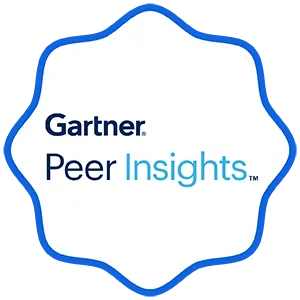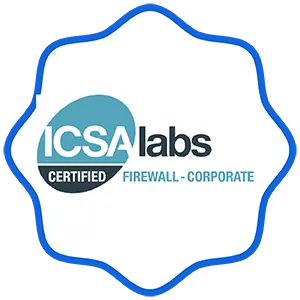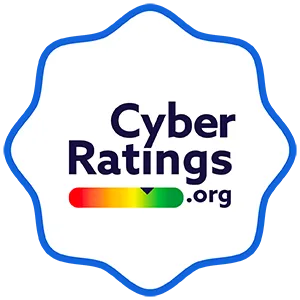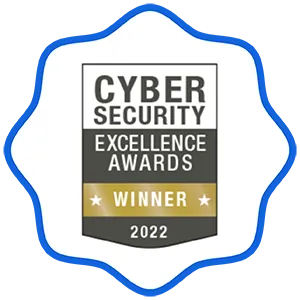Sangfor Network Secure integrates with Sangfor Engine Zero, an AI powered malware detection engine. Engine Zero is developed using machine learning models and AI algorithms. This enables Network Secure to deliver 99.76% detection rate of known and unknown malware across the internet.
Smarter AI-Powered Defense
Sangfor Network Secure takes Next Generation Firewall technology to the next level to meet the evolving security needs of modern enterprises.
- The world’s 1st AI-enabled NGFW with intelligent detection, eliminating over 99% of external threats at the network perimeter.
- The world's 1st NGFW integrated with Web Application Firewall (WAF) to provide network and web application security in one appliance.
- The world's 1st NGFW with built-in SOC Lite that helps security teams rapidly determine the security status of threats and respond.
- The world's 1st NGFW that truly integrates with endpoint security and NDR solutions to create a holistic security system.
Sangfor Network Secure Advantages
Sangfor Network Secure Key Features & Capabilities
Malware Detection
Threat Intelligence
Sangfor Network Secure integrates with Sangfor Neural-X, a cloud-based AI powered threat intelligence and analytics platform.
Neural-X is constantly updated to protect against the latest indicators of compromise (IOC) and adversary tactics, techniques, and procedures (TTPs). For example, Network Secure can send a suspicious DNS address to Neural-X for verification. If Neural-X classifies this DNS as a known C&C server, Network Secure automatically blocks these communications so that no further damage is caused.
Web Application Firewall (WAF)
Sangfor Network Secure is integrated with Sangfor NG-WAF, a next generation web application firewall designed to offer robust protection to web applications.
Using semantic analysis and the industry’s first WAF with a built-in virtual execution system (VES), Sangfor WAF protects web applications from the most advanced web application attacks, such as SQL injection and cross-site scripting.
SOC Lite
Sangfor believes the firewall should make life easier for security administrators. Sangfor Network Secure integrates a SOC Lite feature to simplify security operations and incident response.
Instead of analyzing tons of security logs, security administrators can intuitively determine the current threat level of users and hosts via the Network Secure GUI. What's more, Network Secure provides users with essential guidance on how to respond to security threats.
Anti-Ransomware
Sangfor Network Secure integrates with Sangfor Endpoint Secure (Endpoint Detection and Response - EDR) and Cyber Command (Network Detection and Response – NDR) as part of Sangfor’s Anti-Ransomware solution.
Forensic threat intelligence data, collected from the network and endpoints, visualizes the hidden ransomware process through the GUI and provides "one-click quarantine" to eradicate the encryption-controlling application from all infected hosts.
Malware Detection
Sangfor Network Secure integrates with Sangfor Engine Zero, an AI powered malware detection engine. Engine Zero is developed using machine learning models and AI algorithms. This enables Network Secure to deliver 99.76% detection rate of known and unknown malware across the internet.
Threat Intelligence
Sangfor Network Secure integrates with Sangfor Neural-X, a cloud-based AI powered threat intelligence and analytics platform.
Neural-X is constantly updated to protect against the latest indicators of compromise (IOC) and adversary tactics, techniques, and procedures (TTPs). For example, Network Secure can send a suspicious DNS address to Neural-X for verification. If Neural-X classifies this DNS as a known C&C server, Network Secure automatically blocks these communications so that no further damage is caused.
Web Application Firewall (WAF)
Sangfor Network Secure is integrated with Sangfor NG-WAF, a next generation web application firewall designed to offer robust protection to web applications.
Using semantic analysis and the industry’s first WAF with a built-in virtual execution system (VES), Sangfor WAF protects web applications from the most advanced web application attacks, such as SQL injection and cross-site scripting.
SOC Lite
Sangfor believes the firewall should make life easier for security administrators. Sangfor Network Secure integrates a SOC Lite feature to simplify security operations and incident response.
Instead of analyzing tons of security logs, security administrators can intuitively determine the current threat level of users and hosts via the Network Secure GUI. What's more, Network Secure provides users with essential guidance on how to respond to security threats.
Anti-Ransomware
Sangfor Network Secure integrates with Sangfor Endpoint Secure (Endpoint Detection and Response - EDR) and Cyber Command (Network Detection and Response – NDR) as part of Sangfor’s Anti-Ransomware solution.
Forensic threat intelligence data, collected from the network and endpoints, visualizes the hidden ransomware process through the GUI and provides "one-click quarantine" to eradicate the encryption-controlling application from all infected hosts.
Sangfor Network Secure Use Cases

Robust Perimeter Security
Combines antivirus, intrusion prevention system, AI-powered malware detection and real-time threat intelligence to block over 99% of threats at the perimeter.

Secure SD-WAN
Offers built-in SD-WAN capabilities to secure access for various scenarios, including HQ-to-branch, branch-to-branch, and work-from-anywhere (WFX).

Second Tier Firewall
Supplement your existing firewall with a next generation firewall equipped with AI-powered threat detection, the latest threat intelligence, and NGWAF.
Sangfor Network Secure Awards & Achievements
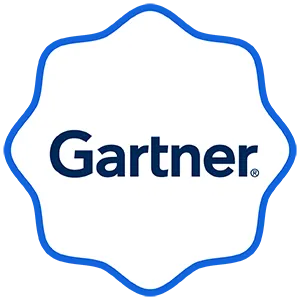
"Visionary" Vendor
Recognized as "Visionary" vendor in 2022 Gartner Magic Quadrant for Network Firewalls
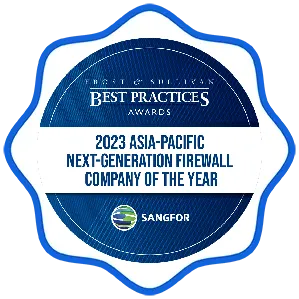
Frost & Sullivan Company of the Year
Frost & Sullivan recognizes Sangfor with the 2023 Company of the Year Award
Get in Touch With Us
Sangfor Network Secure Introduction: Technologies & Use Cases | Sangfor Product Series









Sangfor Network Secure Frequently Asked Questions
A firewall is a network security tool that inspects and filters traffic between devices in a private computer network and the internet. Firewalls allow or deny incoming and outgoing network traffic based on defined rules. This enables users to block unauthorized data as well as prevent malware and other security threats from breaching the network.
Network Firewalls generally come as hardware network devices or software applications. Hardware firewalls are placed in a central network location to filter traffic for an entire network. Software firewalls are installed on endpoints to filter traffic to and from specific devices.
There are also different types of firewalls, including packet filtering firewalls, stateful inspection firewalls, proxy firewalls, network address translation (NAT) firewalls, and next generation firewalls (NGFW).
Next generation firewalls (NGFWs) are the newest generation of firewall technology. NGFWs use something called deep packet inspection (DPI) to inspect the content (payload) of data packets. This allows users to create more granular firewall rules based on specific types of data, applications, devices, and users.
Moreover, NGFWs are a type of unified threat management (UTM) solution. UTMs integrate multiple security features into one device. In the case of NGFW’s, this includes antivirus, intrusion detection system, threat intelligence, application control, email security, and more.
Traditional firewalls like packet filtering and stateful inspection firewalls only support rules based on packet header information, namely the source and destination IP address, protocol, and port number. This is very limited and does not offer much flexibility.
Next generation firewalls use something called deep packet inspection (DPI). DPI allows NGFWs to inspect the content (payload) of data packets and is a key enabler of enhanced firewall protection. One the one hand, users can create granular firewall rules based on specific types of data, applications, services, devices, and users. The allows NGFWs to block malicious data that exploit specific applications and services. DPI also provides the basis for the additional security features of NGFWs to function. With visibility into the data, antivirus can scan traffic for malware and the integrated intrusion prevention system can detect suspicious traffic activity.
Next generation firewalls are a type of unified threat management (UTM) solution that integrates multiple security features into one device. Typical features of NGFWs include:
- Antivirus: Detects the presence of malware in traffic.
- Intrusion Detection System (IDS): Detects suspicious traffic activity that might indicate an attack.
- Intrusion Prevention System (IPS): Responds to detected suspicious traffic activity.
- Threat Intelligence: Provides real-time threat intelligence to detect emerging threats.
- Sandboxing: Executes suspicious files in a test environment to check for maliciousness.
- Application Awareness and Control: Identifies applications and controls which apps are allowed to communicate with the internet.
- URL Filtering: Blocks access to URLs that are malicious or unauthorized by the user.
- Email Protection: Filters out malicious and unwanted email.
- Web Application Firewall (WAF): A firewall dedicated to protecting web applications.
Granular Traffic Filtering: Thanks to DPI, next generation firewalls have visibility into the type of data and the applications, services, devices, and users processing the data. This allows organizations to create firewall rules to enforce granular access policies. DPI also enables NGFWs block malicious data that targets specific apps and services.
Early Threat Detection: NGFWs are integrated with security features like antivirus and intrusion detection system to detect malware and cyber-attacks before they can breach the network. This is important because threats are harder to detect after a breach, which increases the likelihood of a successful attack.
Security Logging: NGFWs support security logging, which is important for several reasons. For example, security analysts can analyze logs to hunt for threats that were missed by the firewall. Security logs are also needed to meet compliance requirements in certain industries and jurisdictions.
An organization should deploy a next generation firewall if compromise of its data and systems lead to material impact. This can be anything from significant financial loss, business downtime, business loss, and reputation damage. Given the sophistication of today’s security threats and the limitations of traditional firewalls to detect them, NGFWs should be the default firewall of choice for organizations looking for robust protection. NGFW vendors typically offer models of varying specifications and capabilities to suit the needs of different organizations, from small businesses to large enterprises.
Next generation firewalls provide superior protection to enterprise networks. This ultimately helps organizations minimize the chances of experiencing a cyber-attack. Considering how damaging cyber-attacks are, effective defense against them is vital for business continuity and prosperity.
NGFWs are also more cost-effective and reduce complexity by integrating various security features that would otherwise be deployed separately. This is especially beneficial for SMBs that lack the resources and expertise to deploy and manage disparate tools.
Next generation firewalls are relatively harder to use than traditional firewalls and may require a dedicated professional to operate and maintain. However, NGFW vendors are responsible for creating the complex firewall and IDS rules that detect and block security threats. Users simply need to keep their firewall up to date. NGFWs require extra work when organizations wish to create their own firewall rules, but NGFWs may come with templates to aid this process.
Because multiple security features are integrated into one device, NGFWs can be managed from a single interface. This in fact makes NGFWs easier to manage compared to separate security tools.
Next generation firewalls do a great job at keeping threats out of the network. However, cyber criminals are constantly refining and evolving their tactics, techniques, and procedures (TTP), so no single cyber security tool can always achieve total protection. That is why it is standard practice for organizations to deploy other security tools in addition to a firewall.
For example, antivirus or more advanced Endpoint Detection and Response (EDR) solutions are needed to detect threats that managed to evade the firewall and land on endpoints. For advanced persistent threats (APTs) that hide and spread in the network for a long period, a User and Entity Behavior Analytics (UEBA) solution like Network Detection and Response (NDR) works best.
NGFW vendors generally offer various models to suit different needs. Organizations should choose a firewall that fits their unique situation to get the best out of their NGFW. Important factors to consider include the NGFWs security capabilities, specifications such as throughput, cost, deployment mode, ease of operation, service, etc. For a more detailed discussion on choosing the right NGFW, feel free to read our enterprise firewall buyer’s guide.
Customer reviews are also an excellent source of reference. For example, Gartner Peer Insights provides vetted and verified reviews to help prospective buyers gain objective and trustworthy insight into the NGFW products of different vendors.
Latest Events
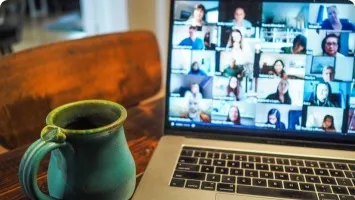
Sangfor International Roadshow 2025 – Lahore, Pakistan
We’re delighted to announce that the Sangfor Technologies Pakistan team successfully wrapped up the Sangfor International Roadshow on July 10th in Lahore, marking a perfect conclusion to our 2025 Global Tour.
Sangfor International Roadshow 2025 – Vietnam
What an Unforgettable Day in Ho Chi Minh City! The Sangfor International Roadshow 2025 made its dynamic stop in Vietnam on June 27th, concluding our APAC tour with a spectacular showcase of innovation.
Sangfor International Roadshow 2025 – Thailand
Sangfor's Bangkok Roadshow united 400+ attendees for a day of tech insights, cybersecurity trends, and cloud innovation under "Digital Plus | IT Minus".
Latest Blog

Sangfor Athena EPP vs. Sophos Intercept X Endpoint: Endpoint Security Comparison for 2025
Compare Sangfor Athena EPP and Sophos Intercept X for 2025. Explore ransomware defense, EDR, licensing, integration, and deployment flexibility.
Sangfor vs Sophos: Enterprise Firewall Comparison for 2025
Compare Sangfor Athena NGFW and Sophos firewalls in 2025. See differences in features, security, support, and model mapping to choose the right solution.
AI-Powered Cyber Threats: From Zero-Day Exploits to Deepfakes and Beyond
Explore how AI is fueling next-gen cyberattacks—from zero-day exploits to deepfake scams—and how organizations can build resilience against intelligent threats.
Latest News

Sangfor Technologies Receives Frost & Sullivan’s 2025 Asia-Pacific Competitive Strategy Leadership Recognition in Cybersecurity Services
Sangfor Technologies earns the 2025 Asia-Pacific Competitive Strategy Leadership Award from Frost & Sullivan for excellence in cybersecurity services.
Sangfor Technologies Strengthens Athena MDR with New UAE Point of Presence to Support Regional Cyber Resilience
Sangfor Technologies unveils a new UAE Point of Presence for Athena MDR, advancing regional cyber resilience and supporting digital transformation.
Sangfor Technologies Unveils Sangfor Athena: A Bold New Brand for Its Cybersecurity Business
Sangfor Athena unifies advanced security solutions under one brand, powered by SynergyAI for proactive cyber defense. Discover intelligent, integrated protection today!





